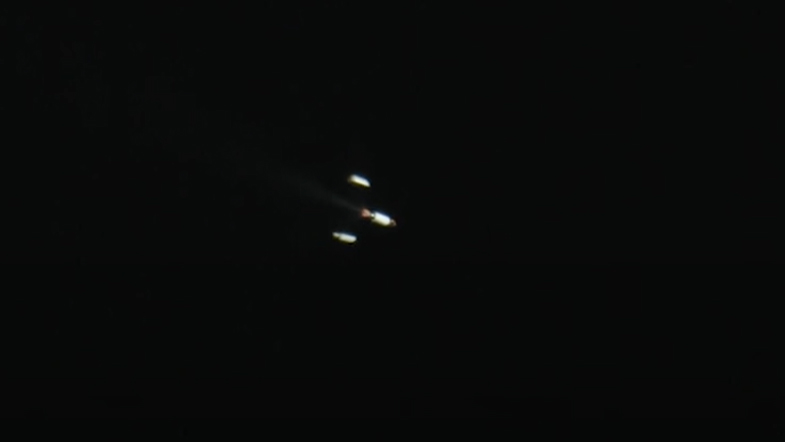This SpaceX video of a Falcon 9 rocket stage separation during launch is just amazing
The video was captured during a Jan. 31 launch of an Italian satellite.
A new SpaceX video has captured a striking view of two critical moments in any rocket launch: stage separation for its booster and nose cone jettison.
The video, which SpaceX released on YouTube Saturday (Feb. 5), shows the company's Jan. 31 launch of a Falcon 9 rocket carrying the Italian Earth-observation satellite Cosmo-SkyMed Second Generation FM2. The mission lifted off from Space Launch Complex 40 at the Cape Canaveral Space Force Station last week.
"Extended tracking shot of Falcon 9," SpaceX CEO Elon Musk wrote on Twitter while sharing the video.
Related: These photos of SpaceX's Italian satellite launch and landing are amazing


The new video does not show the moment of liftoff. Instead, it starts several minutes after launch when the veteran Falcon 9 rocket, which had flown twice before, was near stage separation, a milestone that occurred about 2 minutes and 19 seconds into the flight.
About 26 seconds into the video, the high-powered tracking camera watching the Falcon 9 captured that moment as the first stage of the 230-foot (70 meters) rocket separated from its upper stage, then backed away and flipped over to begin the journey back to Earth.
Puffs of nitrogen gas can be seen as the booster fired maneuvering jets to orient itself in space. The first stage ultimately landed just under 8 minutes after launch, with a touchdown at SpaceX's Landing Zone 1 at Cape Canaveral Space Force Station. You can watch the full Falcon 9 launch and landing video below.
Get the Space.com Newsletter
Breaking space news, the latest updates on rocket launches, skywatching events and more!
Another key moment occurs about 4 minutes and 7 seconds into the video, when the clamshell-like payload fairing covering the CSG-2 satellite popped free and fell away. The payload fairing makes up the Falcon 9 nose cone and protects satellites from aerodynamic stresses of flight during liftoff. It separates once the rocket is high enough that the fairing is no longer needed, shedding unnecessary weight for the upper stage.
Like the Falcon 9 first stage, SpaceX hoped to recover the twin payload fairings, which also had flown before, in order to reuse them on a future flight. Musk has said the company can save $5 million by reusing its payload fairings, which it fishes from the ocean with recovery boats.
Email Tariq Malik at tmalik@space.com or follow him @tariqjmalik. Follow us @Spacedotcom, Facebook and Instagram.
Join our Space Forums to keep talking space on the latest missions, night sky and more! And if you have a news tip, correction or comment, let us know at: community@space.com.

Tariq is the Editor-in-Chief of Space.com and joined the team in 2001, first as an intern and staff writer, and later as an editor. He covers human spaceflight, exploration and space science, as well as skywatching and entertainment. He became Space.com's Managing Editor in 2009 and Editor-in-Chief in 2019. Before joining Space.com, Tariq was a staff reporter for The Los Angeles Times covering education and city beats in La Habra, Fullerton and Huntington Beach. In October 2022, Tariq received the Harry Kolcum Award for excellence in space reporting from the National Space Club Florida Committee. He is also an Eagle Scout (yes, he has the Space Exploration merit badge) and went to Space Camp four times as a kid and a fifth time as an adult. He has journalism degrees from the University of Southern California and New York University. You can find Tariq at Space.com and as the co-host to the This Week In Space podcast with space historian Rod Pyle on the TWiT network. To see his latest project, you can follow Tariq on Twitter @tariqjmalik.









